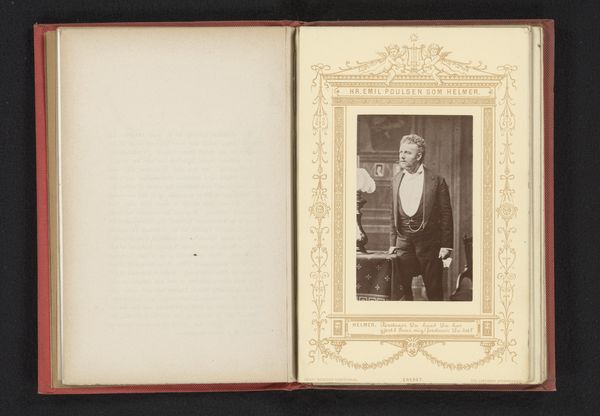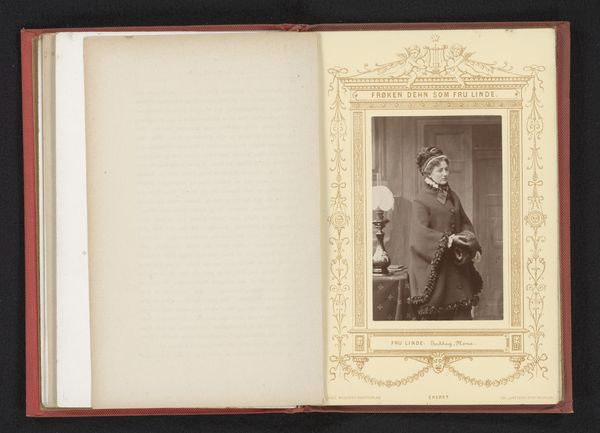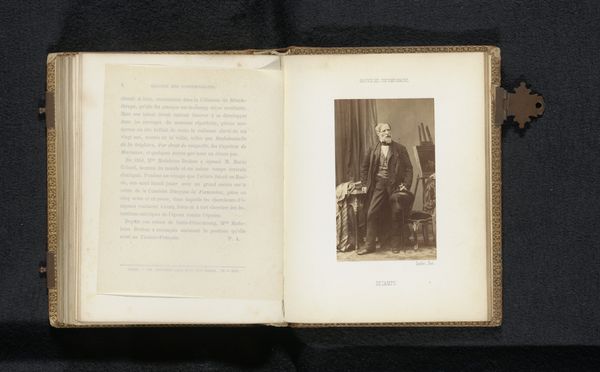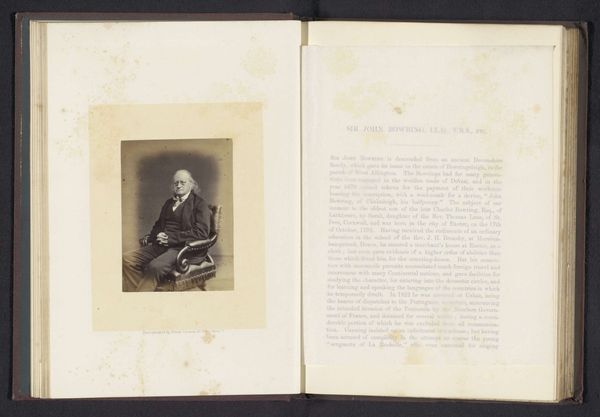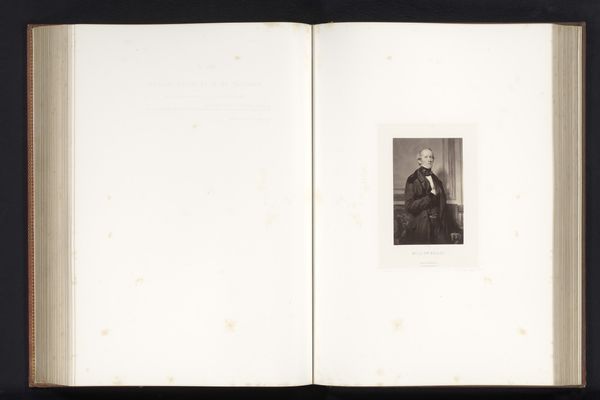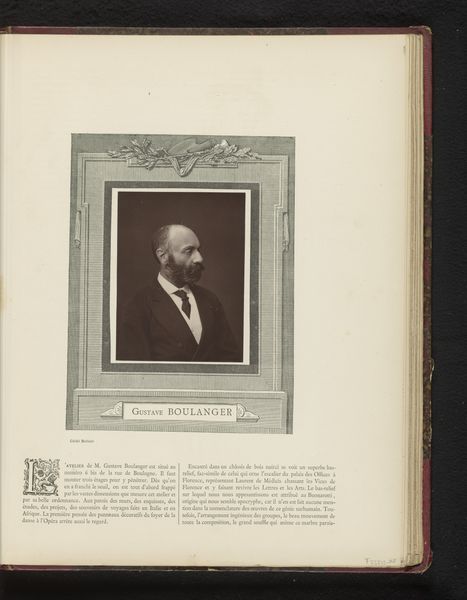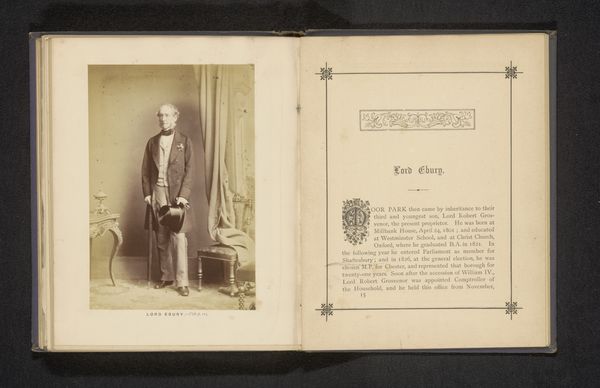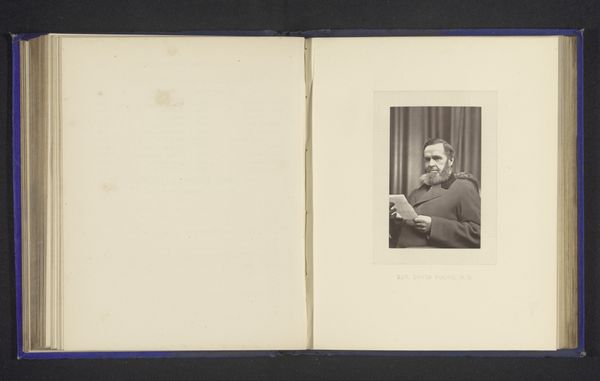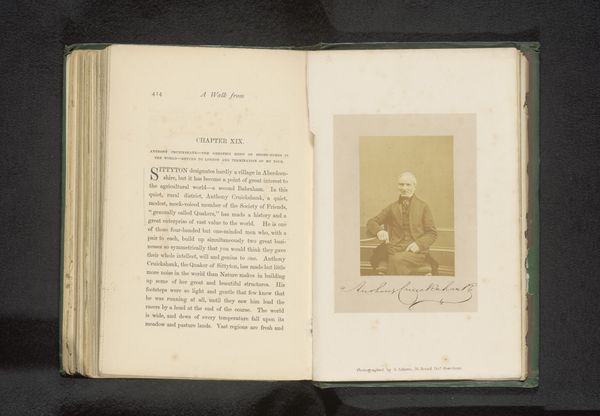
photography
#
portrait
#
aged paper
#
toned paper
#
book binding
#
homemade paper
#
parchment
#
photography
#
warm-toned
#
golden font
#
letter paper
#
coloring book page
#
historical font
Dimensions: height 99 mm, width 62 mm
Copyright: Rijks Museum: Open Domain
Editor: So, this is a photographic portrait of the actor Peter Jerndorff as Dr. Rank in Ibsen's play "A Doll's House," dating from before 1880. The sepia tones and elaborate border framing the image create such a formal, almost theatrical mood. What strikes you about this piece? Curator: Well, placing this image within its social context, the late 19th century, we see photography rapidly becoming a tool for documenting and celebrating figures in public life. Notice how the bordering of the photograph mimics stage architecture, effectively framing Jerndorff as an actor who is ‘on display.’ Considering the burgeoning theatre scene and its growing importance in social discourse at this time, doesn’t this image capture the public's fascination with performers and their roles? Editor: It really does, that makes sense. It's like enshrining a moment from the stage. Curator: Precisely. And thinking about "A Doll's House," a play critiquing societal norms and expectations, especially concerning illness and disease – doesn't Jerndorff's solemn portrayal of Dr. Rank, himself suffering a slow, degenerative disease, underscore those very anxieties? What does the photo's formal staging contribute, in your opinion? Editor: Hmm, it almost sanitizes it. Dr. Rank's suffering becomes part of this carefully constructed image, packaged for public consumption. It makes you question what society chooses to showcase and how. Curator: Exactly. This image is not just a portrait; it is a constructed narrative, shaped by the conventions of photography and the complex relationship between art, illness, and public performance. The act of framing the performance, within the gilded edge, shifts attention from the play to its wider implications within culture at that moment in history. Editor: I never would have considered it that deeply! Seeing the artwork within the culture really opens your eyes! Curator: And that’s the point! Recognizing the interwoven threads between art and the societal fabric provides us with new interpretive avenues.
Comments
No comments
Be the first to comment and join the conversation on the ultimate creative platform.
